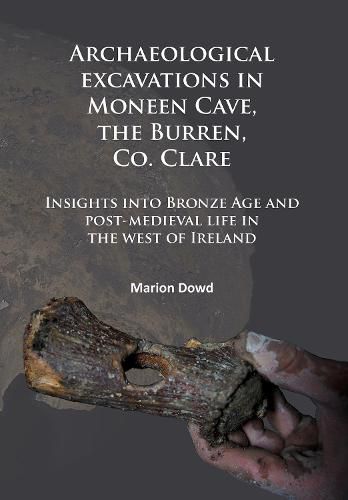Readings Newsletter
Become a Readings Member to make your shopping experience even easier.
Sign in or sign up for free!
You’re not far away from qualifying for FREE standard shipping within Australia
You’ve qualified for FREE standard shipping within Australia
The cart is loading…






In 2011, cavers exploring a little-known cave on Moneen Mountain in County Clare in the west of Ireland discovered part of a human skull, pottery and an antler implement. An archaeological excavation followed, leading to the discovery of large quantities of Bronze Age pottery, butchered animal bones and oyster shells. The material suggests that Moneen Cave was visited intermittently as a sacred place in the Bronze Age landscape. People climbed the mountain, squeezed through the small opening in the cave roof, dropped down into the chamber, and left offerings on a large boulder that dominates the internal space. The excavation also resulted in the recovery of the skeletal remains of an adolescent boy who appears to have died in the cave in the 16th or 17th century. Scientific analyses revealed he had endured periods of malnutrition and ill health, providing insight into the hardships faced by many children in post-medieval Ireland.
$9.00 standard shipping within Australia
FREE standard shipping within Australia for orders over $100.00
Express & International shipping calculated at checkout
In 2011, cavers exploring a little-known cave on Moneen Mountain in County Clare in the west of Ireland discovered part of a human skull, pottery and an antler implement. An archaeological excavation followed, leading to the discovery of large quantities of Bronze Age pottery, butchered animal bones and oyster shells. The material suggests that Moneen Cave was visited intermittently as a sacred place in the Bronze Age landscape. People climbed the mountain, squeezed through the small opening in the cave roof, dropped down into the chamber, and left offerings on a large boulder that dominates the internal space. The excavation also resulted in the recovery of the skeletal remains of an adolescent boy who appears to have died in the cave in the 16th or 17th century. Scientific analyses revealed he had endured periods of malnutrition and ill health, providing insight into the hardships faced by many children in post-medieval Ireland.